How carbon ‘dating’ service connects graziers with grazing land
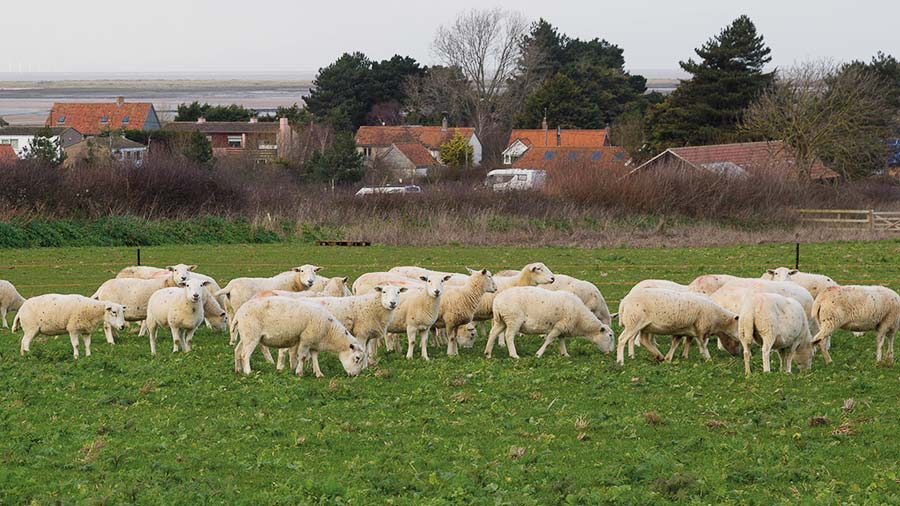 Sheep grazing cover crop © MAG/Judith Tooth
Sheep grazing cover crop © MAG/Judith Tooth Carbon dating is a service that connects livestock farmers who want land with arable farmers who want stock.
It was set up by sheep and beef consultant Liz Genever with the aim of helping build carbon levels in arable soils.
We speak a livestock grazier and an arable farmer who were paired up by the service to find out how it works.
See also: What cover is needed for grazing licences?
The graziers: William and Sarah Haire
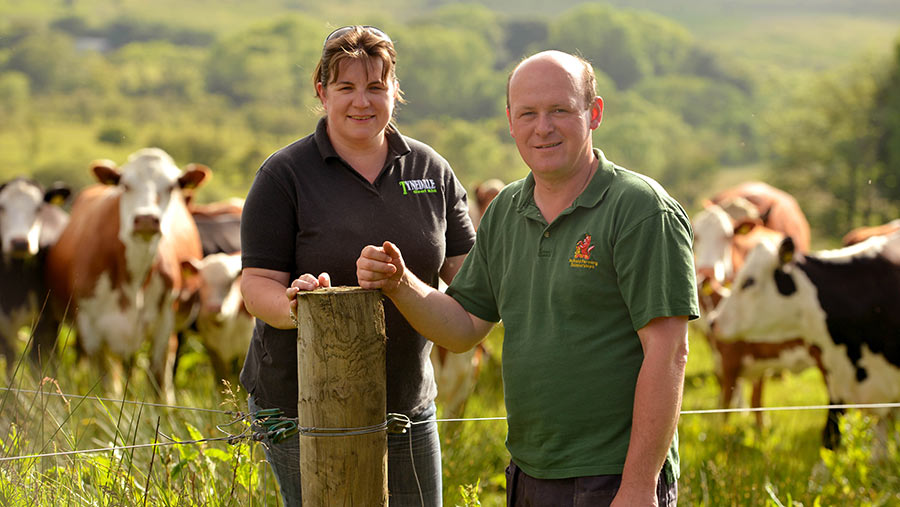
Sarah and William Haire © Alfie Shaw
William and Sarah Haire run a small beef and sheep farm near Sandringham, Norfolk. They had been looking for a local farm where they could graze their livestock when they heard about Carbon Dating.
With full-time jobs outside the farm – Mr Haire is head of estate at Easton College and his wife is head of agriculture at Dawn Meats/Dunbia – their time was limited.
They needed a farmer who would be willing to check the sheep for them each day. More than that, they wanted a fruitful working relationship, rather than simply a place to graze their sheep.
Farm facts: Hillview Farm, Hillington, Norfolk
- 11ha pasture
- 65 Wiltshire Horn and Easycare ewes, with Easycares put to performance-recorded Wiltshire Horn ram to build new flock
- 14 Hereford-cross suckler cows (brought from family herd in Northern Ireland)
“The key for us is to find likeminded people,” says Mr Haire. “It’s about coming at this with a fresh set of eyes and thinking about what’s in it for us as opposed to what’s in it for me.
“The idea is we help them achieve their objectives and they help us achieve ours.”
Grazing partner
Having identified Nathan Nelson, 25 minutes away in Burnham Deepdale, as a potential grazing partner, it took at least a year of planning and discussion to reach the point of moving the ewes to his farm.
“Our ‘first date’ was at our place and then we went and looked at what they were doing and got an understanding of that,” says Mr Haire.
“Then there were the logistics of getting the agreement sorted – grazing windows, fencing, how to transport the ewes and so on.”
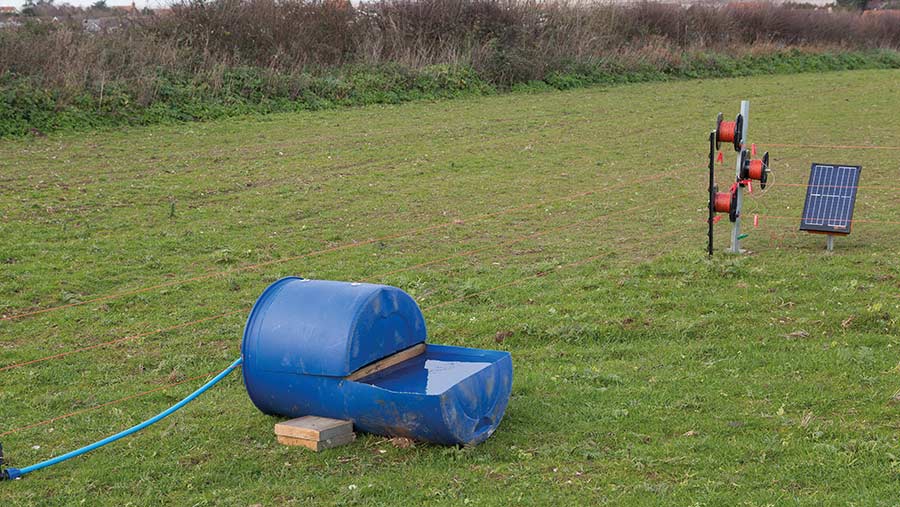
© MAG/Judith Tooth
Future plans
The Haires hope this is the start of an ongoing partnership. They have talked to Mr Nelson about the possibility of buying some organic ewes to lamb and graze permanently at Deepdale Farm.
First, they need to see how the relationship works out, how the soil and the crops respond and how the ewes perform.
The ewes will return to Hillview Farm to lamb in March.
The arable farmer
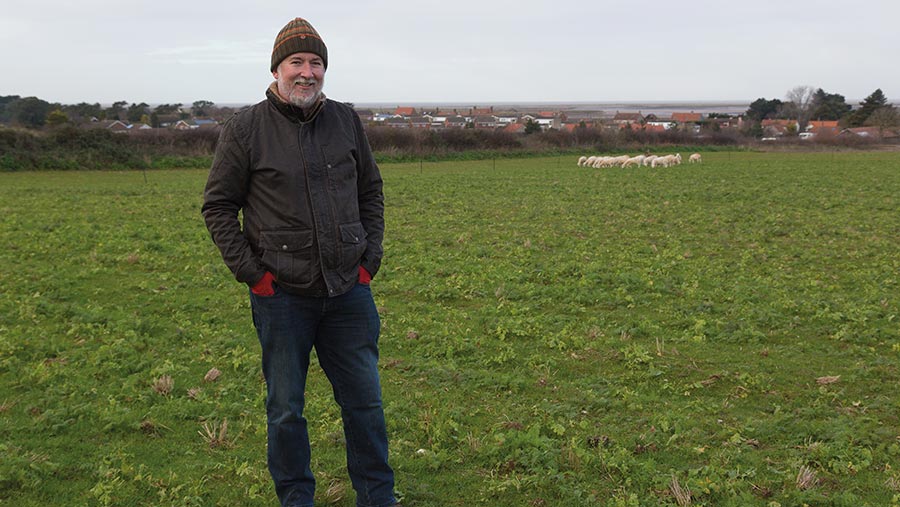
Nathan Nelson © MAG/Judith Tooth
Following years of intensive arable production on light, stony soils, Deepdale Farm has converted to organic production and adopted a range of regenerative practices.
The introduction of sheep to the farm completes the improvement measures.
Farm facts: Deepdale Farm, Burnham Deepdale, Norfolk
- 265ha farmed and in Mid Tier Countryside Stewardship
- Farmed area comprises 20 5ha cropped plots and a range of rotational and non-rotational Mid Tier options: 45ha cultivated margins, 75ha flower-rich margins, 20ha wild bird seed mix and 2km beetle banks
- 35ha woodland
“This rehabilitation approach – and the reason we’re in organic conversion – is because our soils are exhausted from intensive production of winter wheat, carrots, potatoes and maize,” says estate manager Nathan Nelson.
“Soil tests revealed organic matter levels of just 2.5% and a lack of soil aggregates,” he explains. “We saw this playing out in 2020, with soil washed off the fields [during winter flooding].”
The whole farmed area – 265ha – is now in Mid Tier Countryside Stewardship. This includes 20 5ha cropped plots managed under a five-year rotation of cereals, a break crop and a two-year clover ley.
Introducing livestock
“We could have managed the farm without livestock – it wouldn’t be the end of the world if we didn’t have them,” says Mr Nelson. “But one of the ways to improve soil health is to integrate livestock.
“Livestock bring a cycling of nutrients: taking the green stuff and turning it into brown stuff. They are the missing piece of the puzzle, stimulating soil biology and getting manure on.
“The aim now is to kickstart those soil biology processes.”
Finding a grazier
Mr Nelson approached the Carbon Dating service as a way of exploring how he might get livestock onto the farm. Through this he found William and Sarah Haire, who farm near Sandringham.
“First I had a call with a farmer in Yorkshire with store lambs. But we can only graze a small area of our 100ha. Sarah and William suited us better as they didn’t have so many animals.
“With no preconceptions they came to the farm, we got talking, and we got on. That’s a huge part of it.”
The Haires told Mr Nelson they had Easycare sheep. “What I wanted as much as this was an easy-care grazier: someone to get on with that we could trust and rely on.
“There are no guarantees with Carbon Dating – as with any dating – but it’s an opportunity to establish a good relationship. The value of it to us was in meeting William and Sarah.”
Grazing agreement
The field where the sheep are grazing was in organic conversion wheat. It was chosen as Mr Nelson can see it from his bedroom. “It’s reassuring to have the sheep in sight as we dip our toe in [having livestock on the farm].”
The field is down to an SW6 winter cover crop. As part of the farm’s organic conversion, a minimum of 70% of the seed mix must be organic.
Mr Nelson chose an off-the-shelf mix including phacelia, stubble turnips, two types of clover, vetch and mustard. This cost £450 for 15ha. Organic rye was added to make up the organic component, costing a further £350.
As a precaution, red clover is not included in the area to be grazed by in-lamb ewes, as it contains high levels of phytoestrogens that can cause clover disease in ewes.
No money is changing hands between the two farms – it’s grazing for grass. The Haires have provided the fencing, and Mr Nelson provides the water and checks the sheep and the fence twice a day.
The sheep arrived on 16 January and will graze until early March, when they will return to Hillingdon to lamb.
Grazing with non-organic livestock is allowed for up to 120 days a year under the farm’s certification with Organic Farmers and Growers.
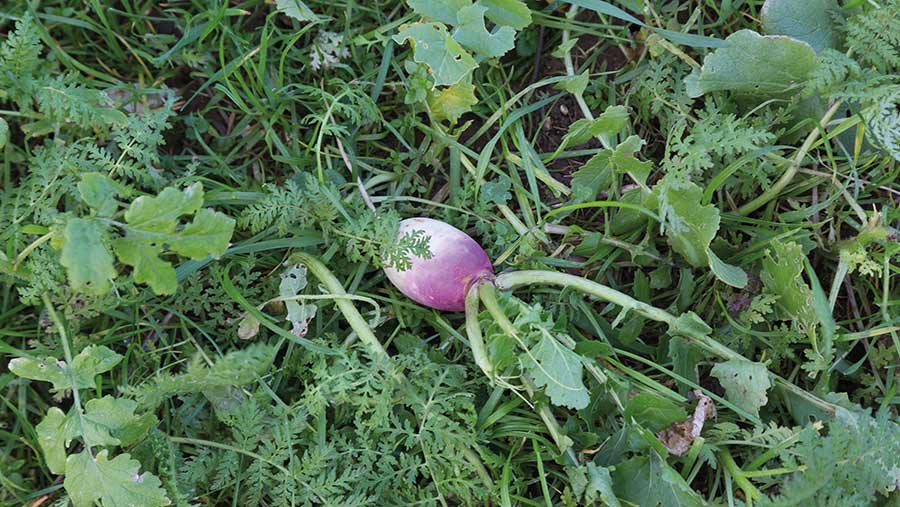
Deepdale Farm cover crop © MAG/Judith Tooth
Future plans
Spring beans will follow the cover crop. Yields and soil condition in the grazed field and in another field going into spring beans from the same cover crop will be recorded to assess the effect the sheep have on soil health.
Mr Nelson is considering a few options: “We could progress to organic livestock and diversify farm production to include organic lamb.
Or there might be potential to develop this pilot into a share-farming arrangement with William and Sarah. Or maybe we could lease land for grazing.
“Or we may not continue to graze – but setting aside 2.5ha for 36 sheep to see if we want to or not – it’s a good start.
“Under our Countryside Stewardship agreement, we could also graze a proportion of AB8 [flower-rich margins/plots] as well as the two-year leys – so we could have a constant drumbeat of activity. But we don’t want to run before we can walk.”
Carbon dating
Carbon dating was set up by sheep and beef consultant Liz Genever with the aim of helping build carbon levels in arable soils.
See more at lizgenever.com/carbon-dating
Interested farmers should email liz@lizgenever.com for a registration form.
